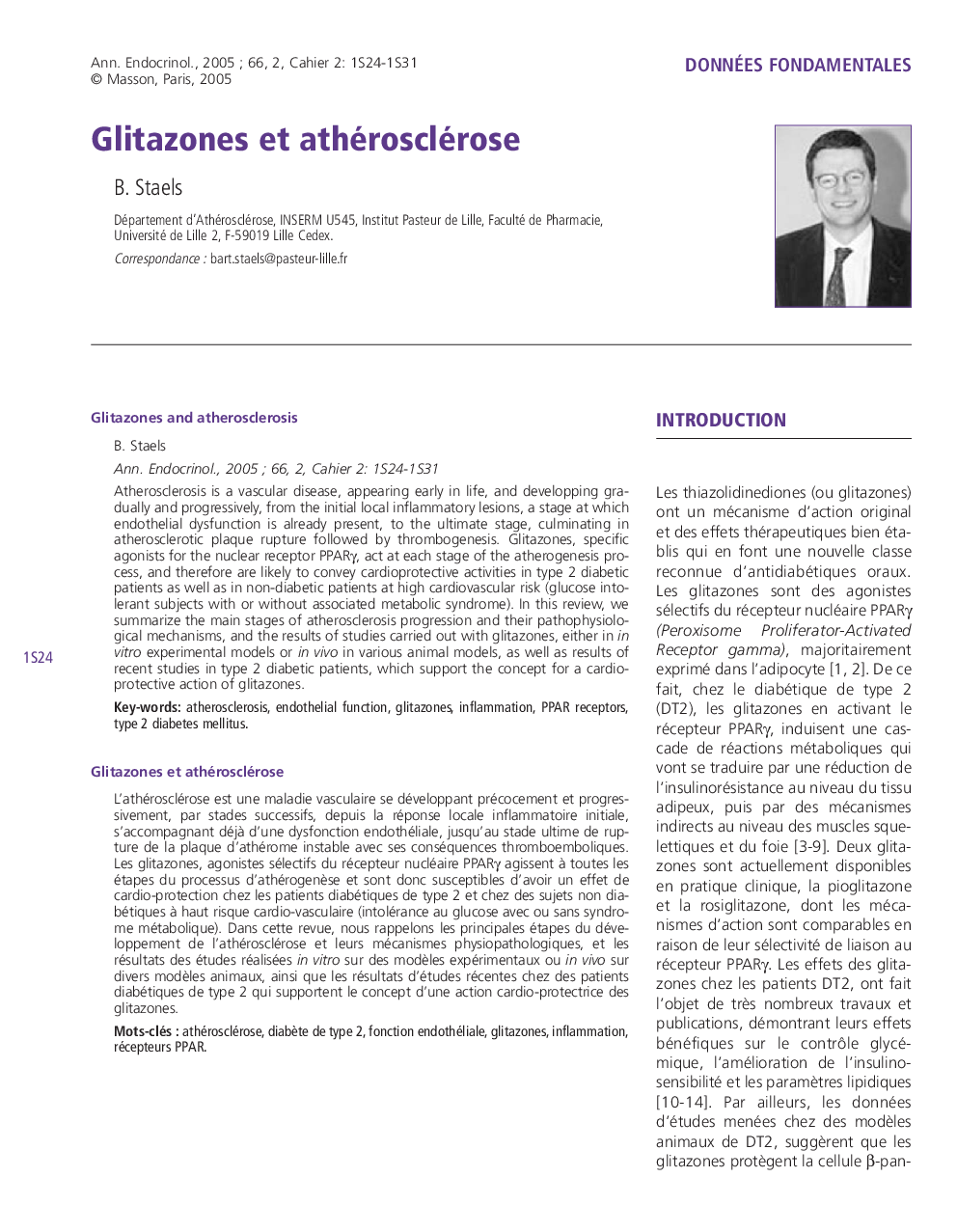| Article ID | Journal | Published Year | Pages | File Type |
|---|---|---|---|---|
| 9235930 | Annales d'Endocrinologie | 2005 | 8 Pages |
Abstract
Atherosclerosis is a vascular disease, appearing early in life, and developping gradually and progressively, from the initial local inflammatory lesions, a stage at which endothelial dysfunction is already present, to the ultimate stage, culminating in atherosclerotic plaque rupture followed by thrombogenesis. Glitazones, specific agonists for the nuclear receptor PPARγ, act at each stage of the atherogenesis process, and therefore are likely to convey cardioprotective activities in type 2 diabetic patients as well as in non-diabetic patients at high cardiovascular risk (glucose intolerant subjects with or without associated metabolic syndrome). In this review, we summarize the main stages of atherosclerosis progression and their pathophysiological mechanisms, and the results of studies carried out with glitazones, either in in vitro experimental models or in vivo in various animal models, as well as results of recent studies in type 2 diabetic patients, which support the concept for a cardioprotective action of glitazones.
Keywords
Related Topics
Health Sciences
Medicine and Dentistry
Endocrinology, Diabetes and Metabolism
Authors
B. Staels,
